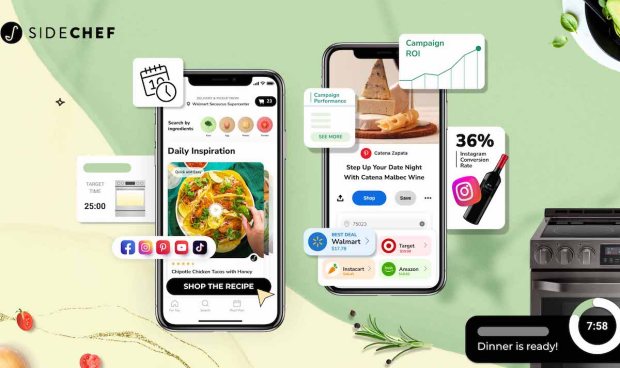Shoppable Recipes Are Just the Start of eGrocery Connected Commerce

When it comes to monetizing cooking content, shoppable recipes are just the building blocks.
In an interview with PYMNTS, Kevin Yu, CEO of connected recipes company SideChef, which earlier this month announced a $6 million Series B fundraise, said there is so much more to be done in terms of embedding commerce into consumers’ food-focused online routines.
“We have, as well as other companies, done a great job of making recipes online shoppable, but for us, that was never the goal,” Yu said. “That’s great that you a recipe and there’s a button that lets you add all that to your cart. But the reality is, I don’t just make one recipe when I cook or when I buy my ingredients. That’s not even efficient.”
He argued that shoppability features are just the engine, but the car is still being built. For instance, the company’s meal plans, which adjust serving sizes according to the amounts of ingredients consumers are buying, have tripled conversion rates relative to single-recipe shoppable content. Now the company is building out its “Zero Waste” option that gets even more granular, offering recipes to use up all the ingredients and calculating price per serving.
The company also offers an app that teaches people how to cook step by step and now is looking into ways to integrate its features into kitchen appliances such as smart ovens, with a goal to have a hand in every part of the cooking process.
“Imagine an oven that you can place a pizza into,” Yu said. “The oven will automatically know what it is and then be able to just turn on and do what it needs to do to get you to your personalized preferences.”
Certainly, if the company has a role in everything from inspiration to purchasing to the appliances themselves, there are opportunities to drive loyalty as well as to open up new streams of advertising revenue.
Now, as Yu sees it, the greatest challenge facing the company is adoption. He said that just as music streaming took more than a decade to become an integral part of consumers’ daily lives, it will take time for consumers to become comfortable with the options that online grocery poses that could change the way they get their meal needs met.
“How do we allow people to have something totally different?” Yu said. “I think we are still at the earliest stages of this, and shoppable recipes are just one piece of that puzzle.”
In fact, nearly half of all U.S. consumers get at least some of the items they once got at the supermarket via eCommerce channels, but few rely exclusively on digital shopping. Research from PYMNTS’ new study “Changes in Grocery Shopping Habits and Perception,” which draws from a December survey of more than 2,400 U.S. consumers, finds that 45% now shop for groceries online at least some of the time, but only 7% do so all the time.
Looking ahead to next year, Yu predicts that artificial intelligence (AI) will be having a transformative effect on how consumers plan and prepare meals.
“Take image recognition,” he said. “Gosh, I don’t know what to do with these ingredients in my fridge. I just want to take a picture. Tell me what I can make. You know, what am I missing? OK, and send it to me. How long is it going to take? 30 minutes? OK. It’s going to cost this much? Great. Decision done.”

